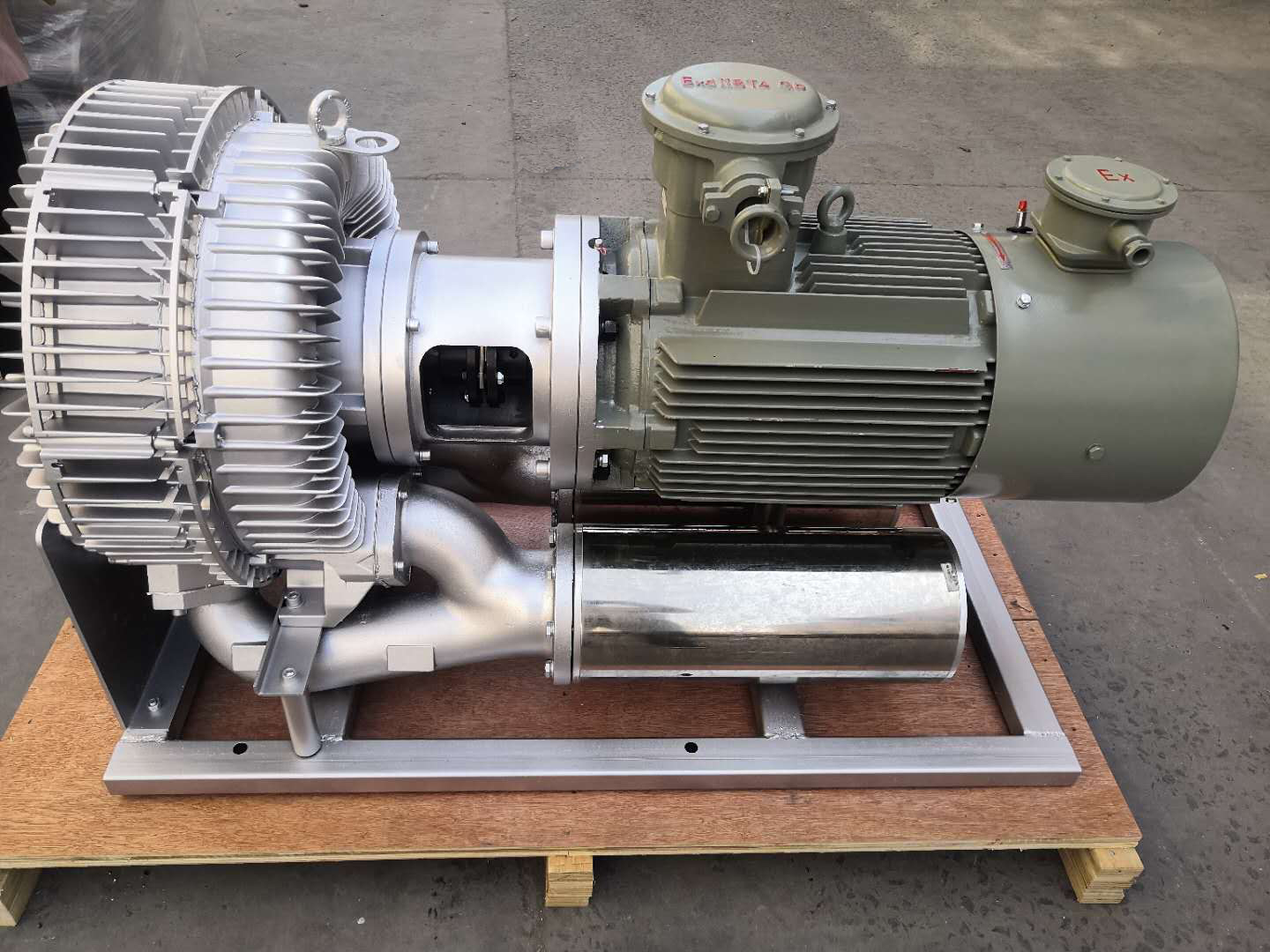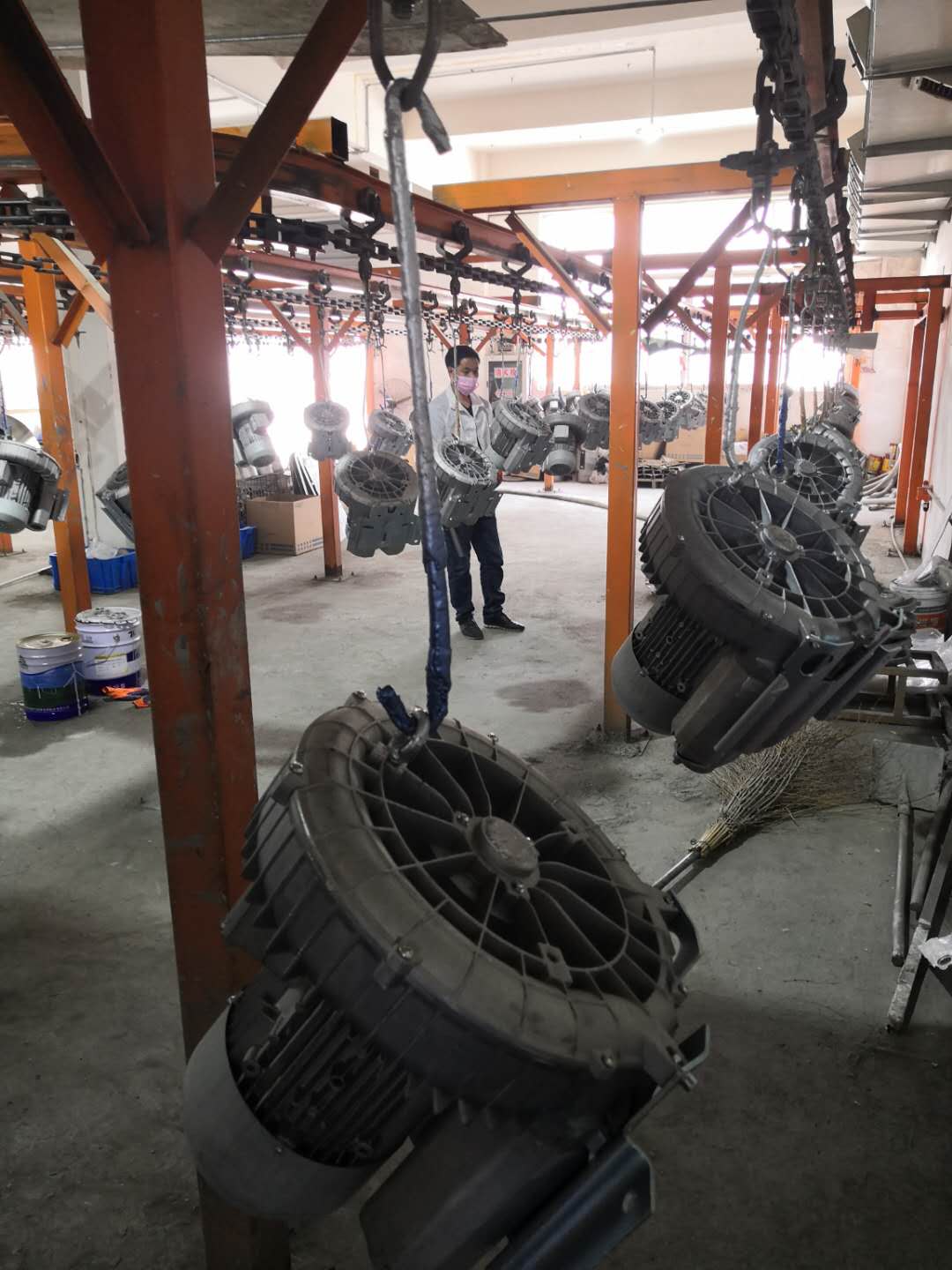The Side Channel blower facilitates the process of air flow to and from production operations in the industry. Because it can be used in many industries, it is highly valuable in processes requiring process cooling, venting or dry bulk cargo handling, just to name a few.

The ring blower inhibits moving air to address the following process limitations.
A: Environment - for example, providing cooler air to an otherwise humid/thermal structure.
B: Design - For example, more modern devices require a continuous flow of air to prevent overheating.
C: Air exchange - This is a simple air flow exchange that can clean up pollution where airborne pollutants or odors may be present.
To understand more about how they work, we must look at how they are designed. Divide them into two main types, you have centrifugal fans and axial fans, which differ in function, airflow direction and system design.
Centrifugal fan and blower
In the centrifugal fan type, you have the following components:
a.Inlet/Outlet - Inlet is related to the inlet in an industrial fan system. The inlet pipe controls the flow of air into the system, while the outlet pipe resists the presence of air.
b.Fan HOUSING/housing - The metal body that contains the entire fan system. The housing also provides the role of protective parts (such as the impeller). This is where the centrifugal power is generated, so the fan housing is built of rigid material.
c.Impeller/fan blades - These are blades that load airflow through the system. The design of the impeller or blade rib can also affect the type of airflow caused by the system, as it can create resistance through the air.
d.Motor - This is the main input source that generates electrical energy to be converted into rotational motion, such as pressure.
e.Rotor shaft - this is the component connected to the motor and, depending on the configuration, will determine the rotation speed of the fan blades.
These types of fans and blowers can be distinguished by fan housing. Its rolling body allows air to enter through the center of the system. In a centrifugal fan, the centrifugal force caused by the movement of air through the fan blades increases as air enters the inlet and is brought through the casing. As the fan blades rotate, the air flows away from the impeller and away from the fan housing.
The kinetic energy gained from the moving tip of the blade, it is in fast motion that pressure is generated, as it will oppose the resistance of the pipe or the installed damper. As the air is displaced radially, the air is expelled and exits through the outlet - located 90 degrees from its entry position. As the air is abandoned, there is a lack of pressure in the center, and the negative pressure moves the air from the inlet to the replenishment, simultaneously attracting new air and creating the cycle.
The fan system is designed to allow high air pressure due to centrifugal force. This makes them suitable for processes that require high pressure applications, such as those operating in the chemical industry, such as extraction of smoke, hazardous pollutants from the air, where continuous replenishment of clean air is needed to ensure workplace safety.
Because centrifugal fans are used in these applications, these types of fans must be designed to withstand a variety of operating conditions, such as corrosion, abrasive materials, chemical fumes, high temperatures, and other passing particulates. Given the design, the pressure creates a lot of resistance and requires very rigid machinery.
Axial flow fan
To enable axial fans (as in the name), an impeller attached to a central hub is used so that it can rotate on its axis to draw air into the system and outwards.
In terms of its components, the axial fan system can be divided into three main parts
Inflow - It contains an inlet cone, bell-shaped to help direct ambient air to the propeller mechanism.
Fan mechanism - which contains the impeller, rotor and wheel. In addition to the actual rotating equipment that drives the airflow, we need other components, such as guides or straightened blades, which help guide the airflow for a smoother passage.
Outflow - This is the exit cone that causes air flow to be directed outward.
Once the air enters the chamber, the pressure is increased by the aerodynamic lift caused by the fan blades, and this pitch helps to promote this. The pitch of the blade is the Angle at which the blade rotates to produce differential pressure. In short, it is because of this pressure difference that air is attracted from behind the mechanism, and the act of rotational motion causes it to move the air forward.
This is used in systems that require high flow rates but low pressure. For this reason, axial flow fans are suitable for a variety of applications and are good at moving larger volume flows. Most common in ventilation systems, exhaust fans or computers, axial fan designs help to absorb cooler air into the PC's housing to prevent the components from overheating. In this example, the apparently narrow space inside the PC casing does not allow passive cooling of its components, especially since many modern components require more efficient cooling. For more industrial applications, axial fan sizes may vary, while fan blades may be up to 15 m in diameter. This allows greater coverage to bring in more air over an area.
Where do we see different uses for centrifugal and axial fans? Here are a few of the apps and how fans operate to supplement certain needs or provide solutions to limitations:
Industrial uses and applications
HVAC/ Cooling - HVAC (heating, ventilation and Air conditioning) systems are designed to provide thermal control and create acceptable indoor air quality. These are essential in environments where certain health regulations need to be followed - maintaining consistent humidity and temperature. In this regard, Blower is used to mitigate temperature increases and decreases. For this purpose, centrifugal fans and axial fans can be customized according to the intent and pressure required to provide ventilation or air conditioning.
DEDUSTING - Use the Side Channel blower for DEDUSTIST applications. That is, in the right amount of stress, the working environment is able to reduce pollution and pollutants in the air, including creating safer working conditions. Performing the segmentation requires a filtration process to exhaust clean air and keep particles out of the air stream. In this application, the process requires high pressure to do so, so most commonly, a centrifugal fan system can be chosen for this purpose.
Exhaust gases - Smoke and chemical emissions must be properly treated in production plants that produce hazardous substances and toxic gases. Reasonably ensure the safety of all plant workers and at all times comply with safety regulations and emissions imposed by local and national regulatory authorities. Since the main purpose is to absorb air, you can see that axial fans may be used to blow.
Personnel/work space - like large warehouses, being able to provide constant conditions is key to maintaining appropriate working conditions where small-scale air conditioning is costly. Depending on what is required, axial fans can cover a large surface area to provide higher CFM, while centrifugal fans are used in conjunction with the entire vent system.
Process COOLING - This is designed to promote an immediate change in temperature, direct air flow, and direct use for cooling machines that tend to overheat. These are other adjustments/components that can ensure that the process works efficiently and smoothly.
Pressure hair dryers - These are primarily used for pneumatic delivery, or for transporting materials through ductwork using air. For example, in woodworking, sawdust collection is a requirement to ensure that it is collected within the work area.
The key to understanding how to choose the right fan for your application is to understand the dynamics of how the fan operates. Given the two types of fans, and the differences in system design between the two, this will help consumers determine where one fan type may have an advantage over the other.
In addition, the Side Channel Blower is considered in the total system in which it operates. This means that in addition to considerations of how the fan intends to operate, it is important to understand how it operates in a ductwork system, as it runs air in the collection and across different steps of the production process.

Finally, these fan systems must meet one requirement: be it smoke control, process efficiency, cooling or ventilation.